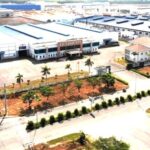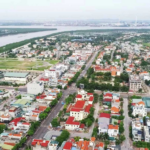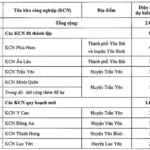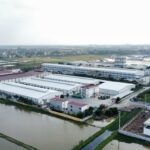According to the master plan, Chau Thanh district is expected to have nearly 1,200 hectares of concentrated industrial parks by 2030 and over 3,100 hectares by 2050, along with 480 hectares of industrial clusters. By 2030, the district’s population is projected to reach 145,000, and by 2045, it is expected to increase to 205,000.
On the other hand, Chau Thanh A district is envisioned to become a region focused on urban-industrial development, high-tech eco-agriculture, agro-tourism, and traditional craft villages, complemented by processing and supporting industries. The population of Chau Thanh A is anticipated to surpass 200,000 by 2045.
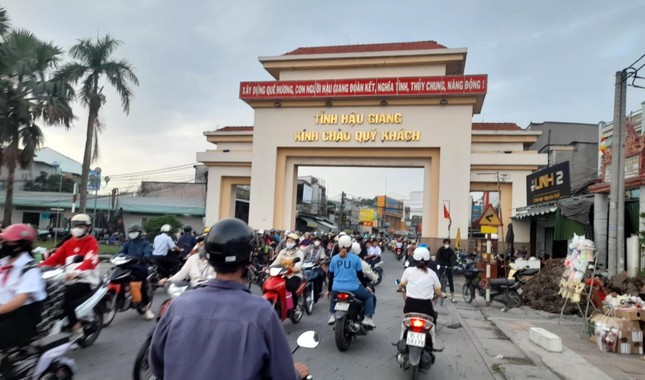
Cai Tac Junction (Chau Thanh A district, Hau Giang province), the intersection of National Highway 1 and National Highway 61. Photo: CK
Mr. Nguyen Van Hoa, Vice Chairman of the Hau Giang Provincial People’s Committee, instructed Chau Thanh district to identify development axes to expand urban space and in-town areas by referring to the orientation of regional planning, provincial planning, and several large-scale investment projects currently being promoted.
Mr. Hoa emphasized the need to calculate population criteria to achieve a type IV city and aim for type III city standards. He directed the district to prioritize infrastructure development in areas such as transportation, ports, logistics, agriculture, industry, culture, tourism, and social infrastructure, including education and healthcare. Additionally, the district should implement investment projects in phases to attain the type IV city status and establish a town by 2030.
Regarding Chau Thanh A district, in addition to the common contents similar to Chau Thanh, Mr. Hoa noted the necessity to update the ongoing planning, regional planning, and provincial planning to guide the development of industries, agriculture, urban areas, and tourism.
Mr. Hoa further elaborated on the goal of constructing the planning mission for Chau Thanh A district to achieve the criteria for a type IV city by 2030, laying the groundwork for the establishment of Chau Thanh A town. He emphasized updating transportation infrastructure, including expressways, National Highway 61C, provincial roads, and district roads, to ensure harmonious urban development. Additionally, he provided direction on social infrastructure and the resources required to accomplish these goals.
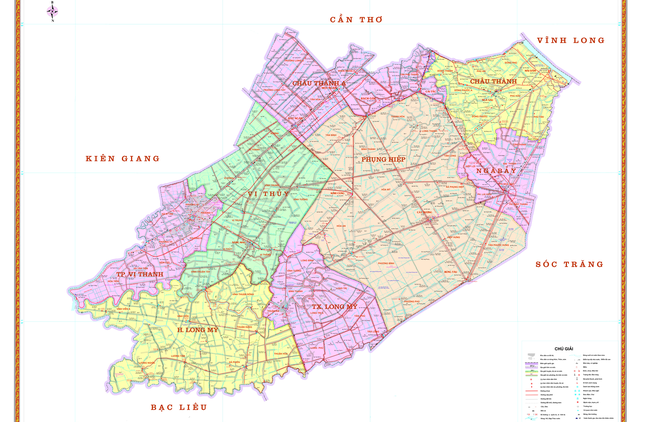
Administrative map of Hau Giang province.
According to the Hau Giang Provincial Party Committee’s action program for implementing the Provincial Planning for the period of 2021-2030, with a vision towards 2050, the goal is for Hau Giang to become an industrial province with a fairly high level of development in the Mekong Delta region by 2030.
The province aims for an average GRDP growth rate of 8.7%/year, with a per capita GRDP of over VND 150 million/year. It also targets a 15%/year average increase in state budget revenue and a 1%/year reduction in the poverty rate.
By 2050, Hau Giang envisions itself as a province with a relatively high level of development in the country, serving as a center for industrial production and logistics in the Mekong Delta region.
Located in the center of the Hau River West sub-region, Hau Giang province spans over 162,200 hectares, of which more than 86% is agricultural land. The province is administratively divided into eight units at the district level, including two cities, one town, and five districts. The province’s population is nearly 728,300, with approximately 72% residing in rural areas.
The Alluring Proposal: Unveiling the Suggestion to Increase Land Rental Prices in Dong Nai’s Four Industrial Parks
The province of Dong Nai has proposed a rental price increase for four of its industrial parks, with a significant rise of between 17 and 43% for the 2020 – 2025 period. This proposal is part of a broader adjustment and supplement to the land price framework, which will have a profound impact on the region’s industrial landscape.
The Big Three: Western Pacific’s Industrial Revolution
Within a short span of just a few months, three industrial parks with a total investment of over VND 7.4 trillion have been approved for a group of enterprises within Western Pacific, helmed by Ms. Pham Thi Bich Hue.


